Why the Saxophone in Jazz Matters
The saxophone in jazz is what gives the music its voice. It laughs. It cries. It shouts. Without it, jazz feels quiet and cold.
The saxophone was invented by Adolphe Sax back in the 1800s. Initially, it was designed for bands, but it truly found its voice in New Orleans, the birthplace of jazz.
This instrument had a unique ability to bend notes and slide between them, expressing a range of emotions from joy to sorrow. No other instrument could convey feelings quite like it.
During the Jazz Age, people would hit the dance floor to the sounds of big bands.The saxophone led the way. Later, stars like Charlie Parker and Coleman Hawkins made it sing faster, smoother, louder. They didn’t just play. They told stories with sound. They made up solos right on the spot. That’s called improvisation.
So if you’ve ever felt something while hearing jazz, thank the sax. It’s more than just an instrument. It’s the soul of jazz.
The Saxophone Was Born to Stand Out
Before it found jazz, the saxophone was kind of… lost.
It was made in the 1800s by a guy named Adolphe Sax. That’s why it’s called the saxophone. He built it for army bands. Loud places. Marching music. Not really fun stuff.

He made all sizes, tiny ones, deep ones, even huge ones. But the sound? It didn’t fit in. Not with the orchestra crowd. Not with the fancy music people.
Then jazz came along.
Down in New Orleans, music was different. It was alive. It moved. It made people dance. The saxophone didn’t just fit in there, it lit up the room.
That’s how the saxophone in jazz became something special. It could slide between notes. Cry a little. Laugh a little. It didn’t sound perfect. And that made it perfect for jazz.
It finally felt like it belonged.
From New Orleans to the World: Jazz Finds Its Sound
Jazz didn’t start in some big music school. It started in New Orleans, right out on the street.
You had people from everywhere, different places, different sounds, all mixing together. They played what they felt. Not what was written down. Just pure feeling.
That’s when the saxophone in jazz started to matter.
At first, folks were used to trumpets and clarinets. But the sax? It had a voice. A real one. Like someone was talking right through it.

It could cry. It could laugh. It could play soft and slow, or wild and loud. And when the sax played, people listened, because it sounded like life.
As jazz grew, it left New Orleans. It moved to Chicago, to New York, and then everywhere. But no matter where it went, the sax came with it.
Why?
Because jazz is full of feeling. And the saxophone knows how to feel.
Why the Saxophone Took Over Jazz
There’s just something about the sax.
When it comes in, it doesn’t tap you on the shoulder instead, it grabs your heart. It’s smooth, but it’s also wild. Sharp one second, soft the next. The sound bends and slides like it’s alive.
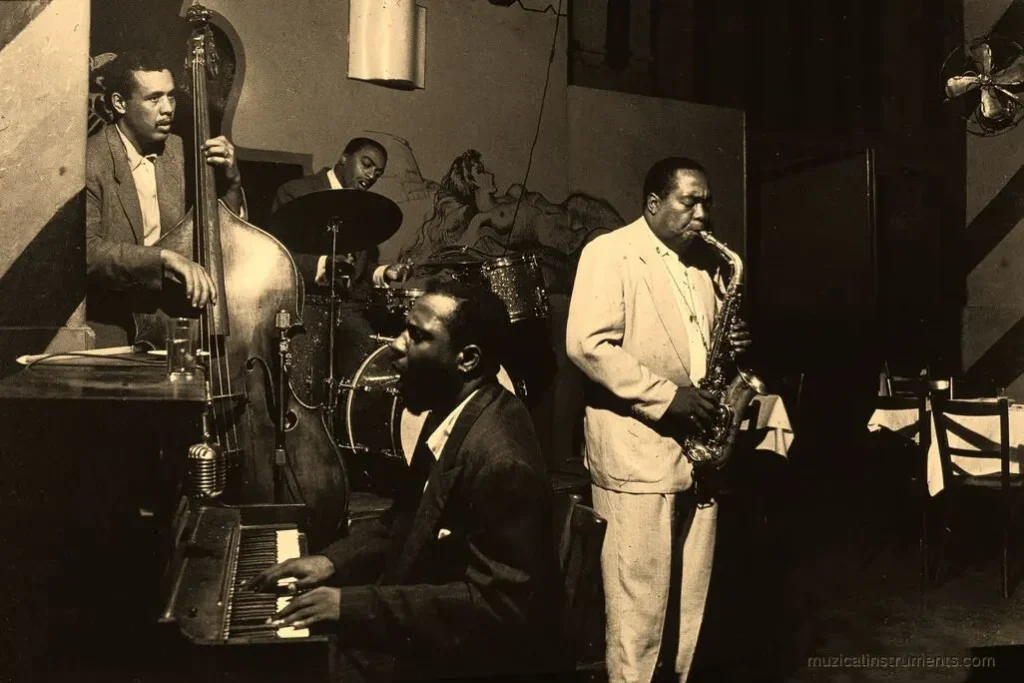
That’s why the saxophone in jazz works so well. Jazz isn’t stiff. It’s messy. It’s made up on the spot. It changes mood without warning. And the sax? It’s built for that.
Other instruments follow rules. The sax breaks them, in the best way.
You can blow hard and make it growl. Or go light and let it whisper. It can lead a band or just float in the background, doing its own thing.
That freedom? That edge? That’s what jazz is all about.
And the sax just gets it.
Jazz Legends Who Made the Saxophone Famous
The saxophone in jazz didn’t just get lucky. It had some real legends behind it.
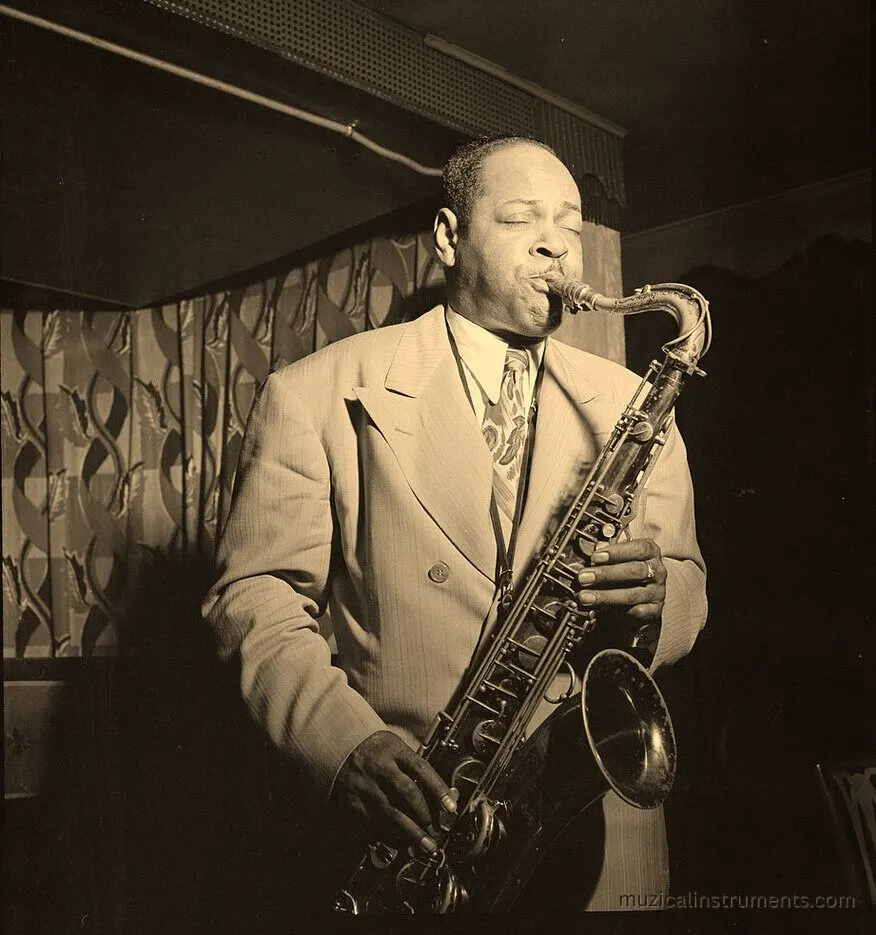
Take Coleman Hawkins. People called him “Hawk.” He made the sax sound big, like it could fill a whole room without even trying. Before him, folks weren’t even sure the sax belonged in jazz. He changed that.
Then came Charlie Parker, or “Bird.” He played fast. Crazy fast. But somehow, every note still made sense. His sax told stories no one had heard before. Happy ones. Sad ones. Some that didn’t even have words, just feeling.
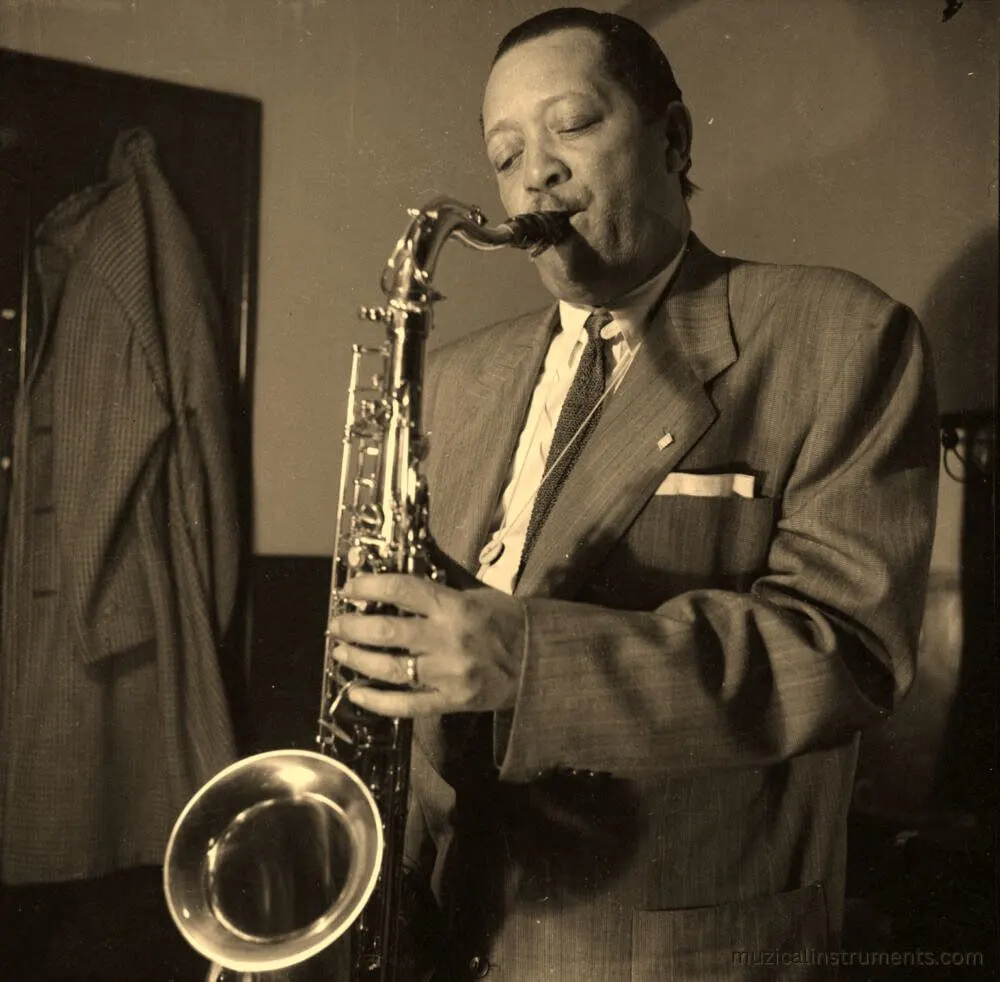
These two were not the only ones. There was Lester Young, who appeared to drift while playing. And John Coltrane, whose saxophone could sound like it was trying to reach the stars.
They all used the sax in their own way. But one thing remained the same: they made it sing.
And because of them, the saxophone in jazz did not just fall into position, but it became the focal point of the sound.
Jazz Sax Legends and What Made Them Great
| Name | What They Brought to Jazz Sax |
|---|---|
| Coleman Hawkins | Gave the sax its power and respect |
| Charlie Parker | Made it fly in bebop |
| Lester Young | Played smooth, cool, almost like talking |
| John Coltrane | Pushed boundaries, deep and spiritual |
| Sonny Rollins | Bold, witty, playful improvisation |
Saxophone Through the Jazz Eras
The saxophone in jazz didn’t stay in one lane. It moved with the times, and every era gave it something new to say.
In the Swing era, it was front and center. Big bands, big stages, and the sax leading the way. It didn’t solo much yet, just smooth lines that made people want to dance.
Then came Bebop. Suddenly, the music got fast. Smart. Twisty. The sax had to keep up, and it did. Players like Charlie Parker turned solos into roller coasters.
Cool Jazz showed up next. Softer, slower, more space between the notes. The sax leaned back, breathed deep, and played like it was dreaming.
Then Modal Jazz came in, and the rules changed. It wasn’t about chords anymore. It was about mood. The sax could stretch out, stay on one note, and let the feeling build.
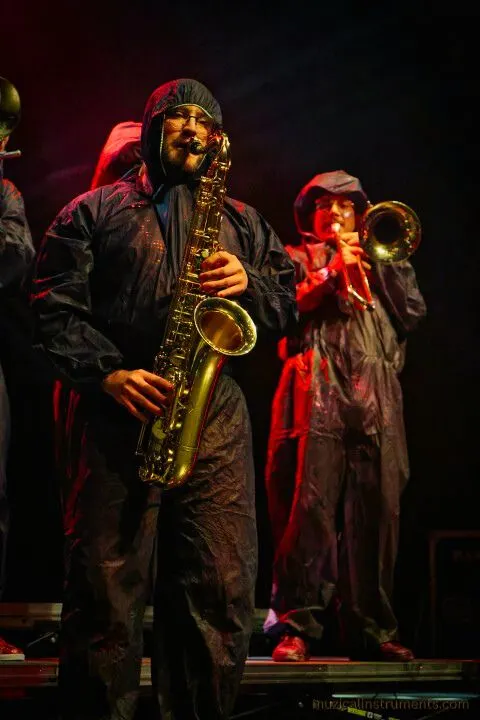
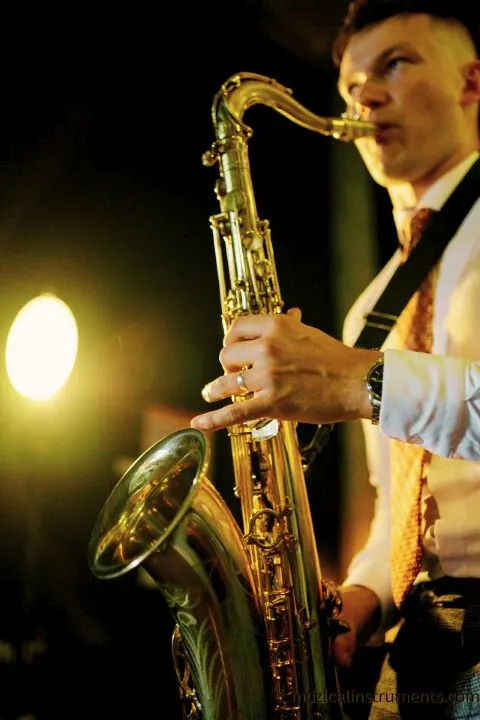
Fusion didn’t care about rules at all. Jazz met rock, and the sax got plugged in. Loud, wild, full of effects. It didn’t whisper anymore, it roared.
And in Avant-Garde? Forget the rules completely. The sax squeaked, screamed, gasped, on purpose. Some called it noise. Some called it genius.
Truth is, the saxophone in jazz kept changing, because jazz did too.
And no matter what shape the music took, the sax always found a way to speak.
How the Saxophone Sounded in Each Jazz Era
| Jazz Era | What the Saxophone Did |
|---|---|
| Swing | Led the big band with bold, smooth lines |
| Bebop | Played fast, smart, full of solos and twists |
| Cool Jazz | Soft, dreamy, laid-back and gentle |
| Modal Jazz | Focused on mood, stretched notes and tone |
| Fusion | Loud, electric, rocked with effects |
| Avant-Garde | Experimental, wild, raw emotion |
What If There Was No Sax in Jazz?
Try to picture jazz without the sax.
Seriously, take it out. What’s left?
You’ve got rhythm, sure. Some horns, maybe a piano walking the chords. But the voice? The soul? Gone.
The saxophone in jazz is more than just sound. It’s feeling. It’s that moment when the music leans in close and tells you something only you can hear.
Without it, jazz would still be music. But it wouldn’t breathe the same. Wouldn’t laugh, wouldn’t cry, wouldn’t break your heart and fix it again, all in one solo.
Take the sax out of jazz and it’s like taking the lead actor out of the scene. The lights are still on, the stage is still set… but the story doesn’t land.
That’s what the sax does.
It doesn’t just play notes. It tells the truth.
While the saxophone often leads in jazz solos, the trombone brings a rich, expressive voice that makes it just as unforgettable. Learn what makes it so special.
The Saxophone Still Speaks
The saxophone in jazz isn’t stuck in the past. It’s still here, still singing, still shouting, still saying things no other instrument can.
You can hear it in smoky clubs and street corners. In school bands and tiny cafés. In old records and brand-new playlists.
New players keep picking it up. Some copy the greats. Some break every rule. But they all feel it, that pull, that voice, that raw sound only a sax can make.
Jazz changes. Always has. But the sax stays part of it, because it knows how to grow, how to adapt, how to speak with soul.
So if you’re wondering whether the saxophone in jazz still matters, just listen.
It hasn’t gone quiet.
Not even close.
FAQs About the Saxophone in Jazz
1. Why is the saxophone so common in jazz?
Great question! The saxophone in jazz just gets it. It can sound smooth and mellow or wild and fiery, all in one song. Its tone is super flexible, almost like it’s talking or singing. That makes it perfect for jazz’s mix of feeling, improvising, and storytelling.
2. Was the saxophone always part of jazz?
Nope! In the very early days, trumpets and clarinets were king. But the saxophone in jazz came along and stole the show. It fit right in with jazz’s free spirit, and players quickly found they could do amazing things with it. Soon, it became one of jazz’s most important voices.
3. What makes the saxophone’s sound so unique in jazz?
It’s all about the way the saxophone in Jazz bends notes and slides between them. Imagine someone speaking with emotion, sometimes soft, sometimes loud, sometimes rough. The sax can mimic that feeling better than many instruments. Plus, its wide range lets players express just about anything, truly defining the sound of the saxophone in Jazz.
4. Can you play jazz without a saxophone?
Sure, you can! But honestly, jazz without sax feels different. Like a story missing its main character. The saxophone brings a special kind of voice that fills the space with feeling and soul. Without the saxophone in jazz loses some of its magic.
5. How did the saxophone change through different jazz styles?
Oh, it’s a wild ride! In swing, it led big bands with bold, smooth lines. Bebop made it fast and tricky, full of lightning solos. Cool jazz turned it soft and dreamy. Fusion plugged it into electric sounds and effects. And avant-garde? That’s where the saxophone in jazz got weird and experimental, all on purpose.
